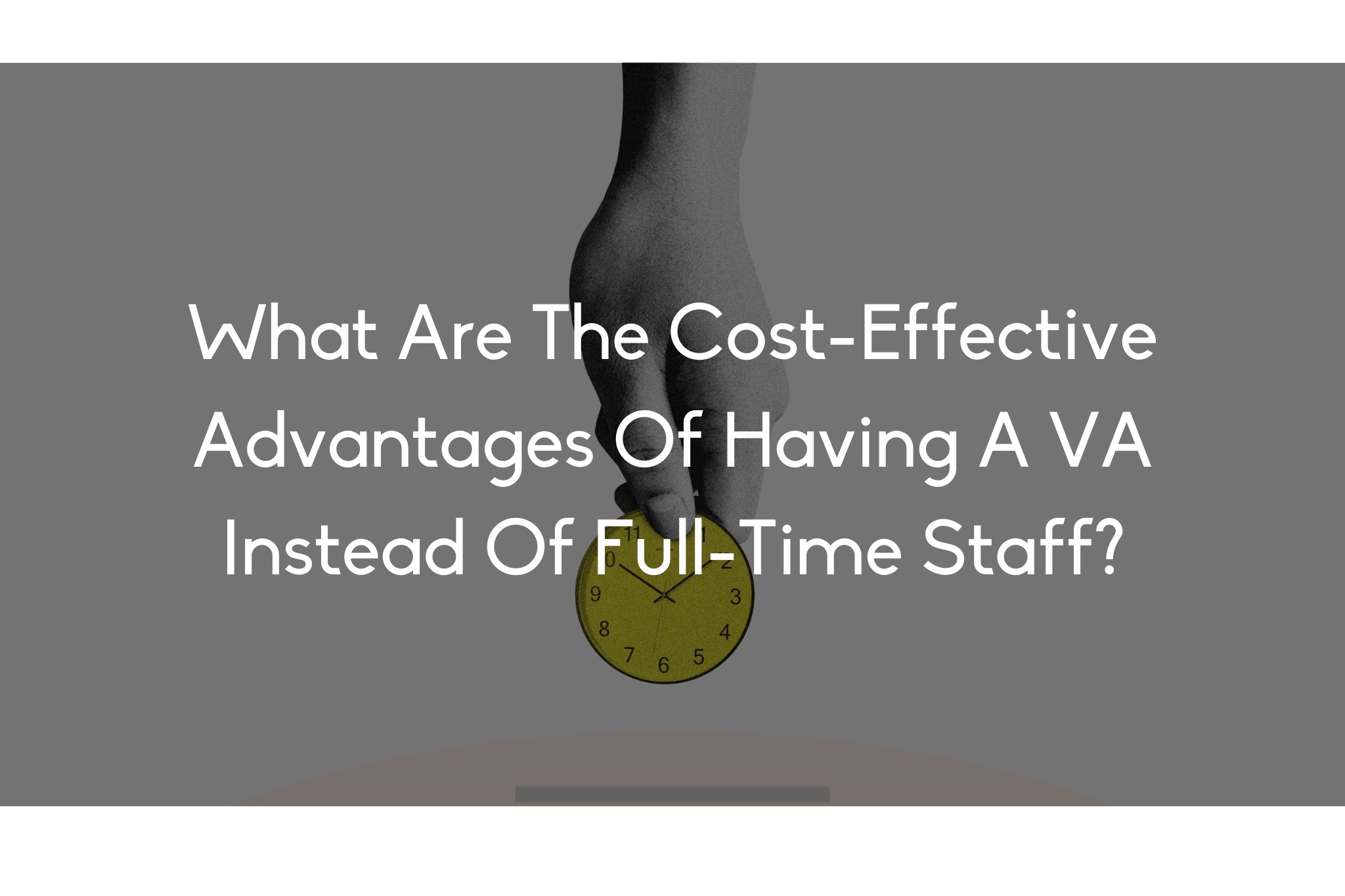
Running a business today means making smart, lean decisions while maximizing your output. The question isn’t just about how much work gets done but how it gets done—efficiently, effectively, and without breaking the bank. Hiring full-time staff can often feel like the default move, but is it always the most cost-effective option?
If you’re wondering how to stay nimble while scaling, it’s time to rethink the traditional route of onboarding full-time employees. Virtual Assistants (VAs) are no longer just a trend; they’re transforming the way businesses operate—and they’re doing it with a cost-saving edge that’s hard to ignore.
Instead of locking yourself into the commitment and financial weight of full-time staff, you can leverage the flexibility, scalability, and cost-efficiency of Virtual Assistants. Here’s how a VA can offer you not only a leaner budget but a more streamlined, efficient business model.
Whether you’re a startup trying to conserve every dollar or a well-established business looking to cut unnecessary overheads, understanding the cost advantages of a VA versus full-time staff will shift the way you think about your workforce. Let’s break it down.
One of the most immediate and apparent benefits of hiring a VA is the drastic reduction in overhead costs. With full-time staff, you’re paying for more than just their salary. Think about it: office space, utilities, workstations, software licenses, and all those little extras that add up. These are costs you’re locked into, whether your employee is actively working or not.
With a VA, you cut those expenses out of the equation. Virtual Assistants work remotely, which means no extra office space, no hardware purchases, and no long-term utility bills. They’re already equipped with the tools and software they need to get the job done. You’re only paying for the hours they work, and nothing more. The bottom line? You’re getting the same quality of work without sinking money into operational expenses that don’t directly contribute to your bottom line.
With full-time staff, you’re committed to a steady salary, benefits, and possibly overtime, even during slow seasons. This is particularly tough for businesses with fluctuating workloads. One month, you may have too much work to handle; the next, your team might be sitting idle—but the paycheck doesn’t stop.
A VA operates on a different model. Most VAs charge by the hour or by task. You can scale their workload up or down depending on your current needs without the burden of fixed costs. Need someone to manage your email inbox for 10 hours this week but only 2 hours next week? No problem. You’re only paying for what’s necessary, avoiding the inefficiencies of overstaffing or paying for downtime. This flexibility makes a huge difference in keeping labor costs lean while still maintaining quality.
Employee benefits can be a significant chunk of your HR budget. From health insurance to paid leave, pension plans to bonuses, full-time employees come with a lot of added costs beyond their base salary. These are often non-negotiable for businesses that want to attract and retain talent, especially in competitive industries.
In contrast, a VA is a contractor. You’re not responsible for any benefits, meaning those extra expenses vanish from your ledger. This doesn’t mean you’re sacrificing talent—on the contrary, you’re accessing professionals who prefer the flexibility of freelance or contract work. They’re motivated, skilled, and you’re not tied into the long-term financial commitments that come with hiring permanent staff.

The traditional hiring model restricts you to your local talent pool, which can be costly, depending on your region. And let’s face it, the top local talent usually comes with premium price tags, especially for specialized roles. That’s where VAs offer a unique advantage.
You have the freedom to hire from a global marketplace. This not only broadens your talent pool but allows you to find highly skilled professionals at competitive rates. Depending on where your VA is located, the cost of living might be lower, allowing you to benefit from excellent expertise at a fraction of what you’d pay for an in-house employee in your country.
Onboarding a new employee can be time-consuming and expensive. You’re investing in training, system setup, and sometimes even certifications. With a VA, especially if you hire someone with niche expertise, you’re often working with someone who’s already skilled and experienced. There’s minimal ramp-up time, and they can hit the ground running.
The best part? You’re not tied to long training periods or ongoing development programs that are common with full-time hires. Many VAs take it upon themselves to stay up-to-date with industry trends and tools, so you’re always getting someone sharp and current without the need for costly professional development.
If your business is in a growth phase, the flexibility to scale your workforce quickly and efficiently is essential. But full-time hires come with their own set of limitations—there’s a lengthy hiring process, potential training needs, and the financial commitment that comes with onboarding each new employee.
VAs give you the ability to scale up or down based on your immediate needs. Are you launching a product and need extra help with customer support? Bring on a VA for the launch phase. Once things stabilize, you can easily scale back. This level of flexibility allows you to stay lean during slower periods and ramp up quickly when necessary without being tied to long-term contracts or employee obligations.
Managing full-time employees can become a job in itself—scheduling, performance reviews, team meetings, and HR issues all take up valuable time. When you bring on a VA, they’re often more self-directed, allowing you to step back from the day-to-day management and focus on the bigger picture. Instead of worrying about whether tasks are being completed, you can trust that your VA is handling it, freeing you up to strategize, grow, and lead.
Less time spent managing means more time spent innovating, planning for expansion, and scaling your business in a way that makes sense.
Opting for a Virtual Assistant over full-time staff isn’t just about saving money—although that’s a big perk. It’s about running a more flexible, efficient, and scalable operation. You’re tapping into specialized skills without the financial and logistical burdens of full-time employees, allowing you to stay agile and competitive.
In a world where business needs are constantly evolving, staying adaptable is key. And with a VA, you get just that—at a fraction of the cost.

